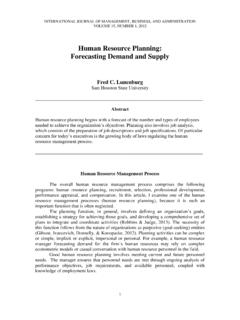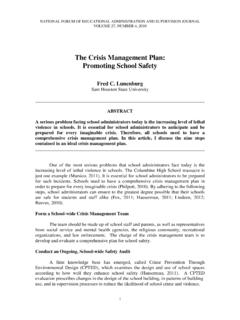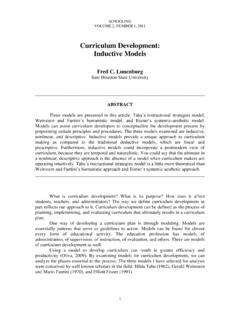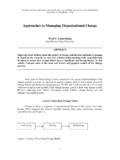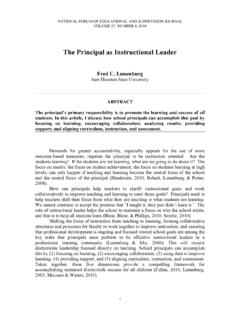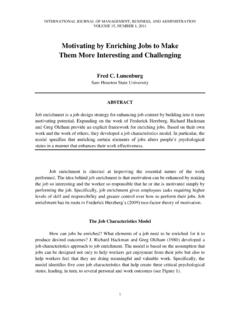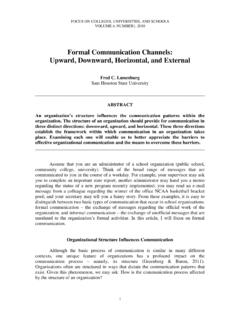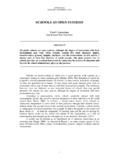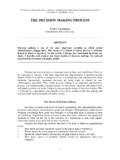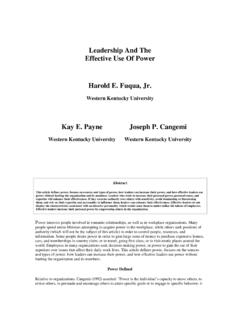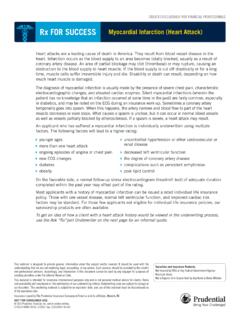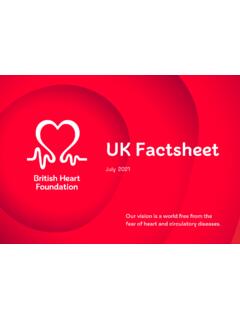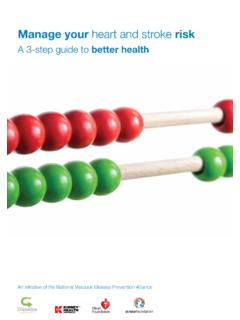Transcription of The Effects of Anger on the Brain and Body
1 NATIONAL FORUM JOURNAL OF COUNSELING AND ADDICTION VOLUME 2, NUMBER 1, 2013 1 The Effects of Anger on the Brain and Body LaVelle Hendricks, EdD Assistant Professor of Counseling Department of Psychology, Counseling, and Special Education Texas A&M University-Commerce Commerce, TX Sam Bore, PhD Assistant Professor of Psychology and Counseling Tarleton State University Stephenville, TX Dean Aslinia, PhD Assistant Professor of Counseling Department of Psychology, Counseling, and Special Education Texas A&M University-Commerce Commerce, TX Guy Morriss Assistant to the Athletic Director/Former Head Football Coach Texas A&M University-Commerce Commerce, TX Abstract Anger is described as an intense feeling in response to feeling frustrated, hurt, disappointed, or threatened. Anger contains both advantages and disadvantages.
2 Platt states that benefits of Anger include overcoming fears and building confidence to respond to danger or threats which leads to the fight or flight response while disadvantages of Anger consist of excess Anger serving as a numbing agent emotionally and cognitively. He indicates that a failure to recognize and understand our levels of Anger leads to problems (2005). Additionally, research has shown that Anger is correlated with heart disease (Kam, 2009). This article examines the causes of Anger and the impact of Anger on the Brain and body. Anger management techniques are also discussed. NATIONAL FORUM JOURNAL OF COUNSELING AND ADDICTION 2_____ What Causes Anger ? Clinched fists, grinding teeth, increased heart rate. Are these the signs of an intense physical workout session or someone experiencing a heart attack or stroke?
3 They could very well be the signs of all three. However, these are just a few of the physiological signs of someone experiencing Anger . Anger is a common human emotion. It is a strong emotion often caused by some form of wrong-doing, ill-treatment or unfairness. We experience the feeling of Anger when we think we have been mistreated, injured or when we are faced with problems that keeps us from getting what we want or attaining our personal goals. Anger , according to the cognitive behavior theory, is attributed to several factors such as: Past experiences Behavior learned from others Genetic predispositions Lack of problem solving ability (Loo, 2005, para. 1). We all experience it, some more often than we like to admit. Experiencing Anger varies from person to person and not everyone handles Anger in the same way.
4 There are individuals who Anger very easily and then there are those who rarely display Anger . Some people are conscious of their Anger and know how to control it and deal with it. Conversely, there are others who fail to recognize the signs of Anger and find themselves in an uncomfortable and often unpleasant situation. According to Dr. Harry Mills, Anger is not an emotion that we are born with, rather one that is learned (2005). We learn how to become angry in multiple ways. As children we learn by copying the behavior of people around us. For example, growing up in a home where fighting and arguing is a constant engagement can cause a child to learn that this behavior is normal and demeaning and scolding others without reason is acceptable. The child may grow up unaware that they have an Anger problem.
5 These children may grow up to be aggressive and hostile towards their peers and others. This learned behavior may lead to a child becoming a bully. Bullying is the act of repeated aggressive behavior done intentionally to hurt another individual physically or emotionally. Bullies behave in this aggressive, abusive manner because it gives them a sense of power over others. Once they bully someone, they find that others respect them or fear them for their hostile behavior. The child tends to become more aggressive in their behavior because they have learned that their actions make them popular ( Bullying, ). Ironically, the victims of bullying also learn to be angry when they are continuously the target of this aggressive and abusive behavior. Their Anger and desire for revenge builds up causing them to develop their own Anger issues.
6 They become aggressive and seek revenge on not just the person who abused them but others as well. The victim now becomes the bully. Bullying is not necessarily restricted to children and adolescents. Adults are also victims of bullying. It can take place at home, at school, and in the workplace. Adults with Anger issues will target their family, friends, co-workers, and even strangers. They take out their Anger on others, wanting someone else to feel the humiliation and abuse that they have had to endure; they want someone else to experience the pain, whether physical, mental, or verbal ( Bullying, ). LAVELLE HENDRICKS, SAM BORE, DEAN ASLINIA, AND GUY MORRISS _____3 The average adult experiences Anger about once a day and becomes annoyed or peeved about three times a day (Mills, 2005).
7 Is there a difference between annoyed, peeved, or angry? The difference is between feeling mildly angry and extremely angry. Annoyed means to cause slight irritation to another by troublesome, often repeated acts ( Annoyed, 2013, para. 1). To be peeved simply means to cause to be annoyed or resentful ( Peeved, 2013, para. 1). On the other hand, angry means to feel extremely annoyed or to express extreme annoyance such as being incensed or enraged ( Angry, 2013, para. 1). According to Loo (2005), an experienced negotiator and an expert in conflict resolution, there are two sources of Anger : an internal source and an external source. The internal source of Anger stems from irrational perceptions of reality and low frustration point. Psychologists have identified four types of thinking that lead to internal sources of Anger : Emotional reasoning: people, who reason emotionally, often misinterpret normal event and things that other people say as a direct threat against their needs and goals.
8 Emotional reasoning individuals often become irritated at innocent things other people tell them. They perceive these things as attacks on themselves. Low frustration tolerance: everyone at some point experience low tolerance for frustration. Stress-related anxiety tends to lower our tolerance for frustration which then causes us to see normal things as threats to ourselves. Unreasonable expectations: people sometimes make demands without knowing the reality of the situation. Unable to have things go their way or have others act a certain way, lowers the tolerance for frustration and causes people to get frustrated and angry. People-rating: this Anger -causing type of thinking triggers derogatory labeling on other people. This type of thinking dehumanizes and makes it easier for people to become angry at other people.
9 (Loo, 2005, para. 4) As for external sources, psychologists have come up with hundreds of events which cause people to get angry. They have narrowed them down to the following four events: People make personal attacks against other people in the form of verbal abuse. People attack other people s ideas and opinions by cutting these ideas and opinions down. People threaten other people s basic needs work, life, family, etc. People s level of tolerance for frustration decreases due to environmental factors in their lives. (Loo, 2005, para. 5) It is plain to see that low tolerance levels of frustration factor into both internal and external sources of Anger . Recognizing these factors may help us deal with our Anger and help resolve our Anger issues. The following four factors that we deal with on a daily basis, which cause our frustration tolerance levels to decrease are: Stress/Anxiety Pain-physical and emotional Drugs/Alcohol Recent irritations- having a bad day NATIONAL FORUM JOURNAL OF COUNSELING AND ADDICTION 4_____ We encounter stress and anxiety in our daily lives, whether it is at work, home, school, or during the drive home.
10 Our stress levels increase which can cause our tolerance for frustration to decrease. This affects adults, adolescents and children. The stress we experience at work and school often carries over into our homes which then affect our families. Even the drive home can lead to increased levels of stress and anxiety. The bumper to bumper traffic, the driver who almost ran you off the road; you arrive home and your spouse has complaint after complaint about the children not wanting to do their homework, their constant fighting which can lead you to scream and wave your arms in the air in frustration. You have completely lost control of frustration tolerance. What has occurred is that you encompassed your frustrations from work and your drive with the issues at home.
